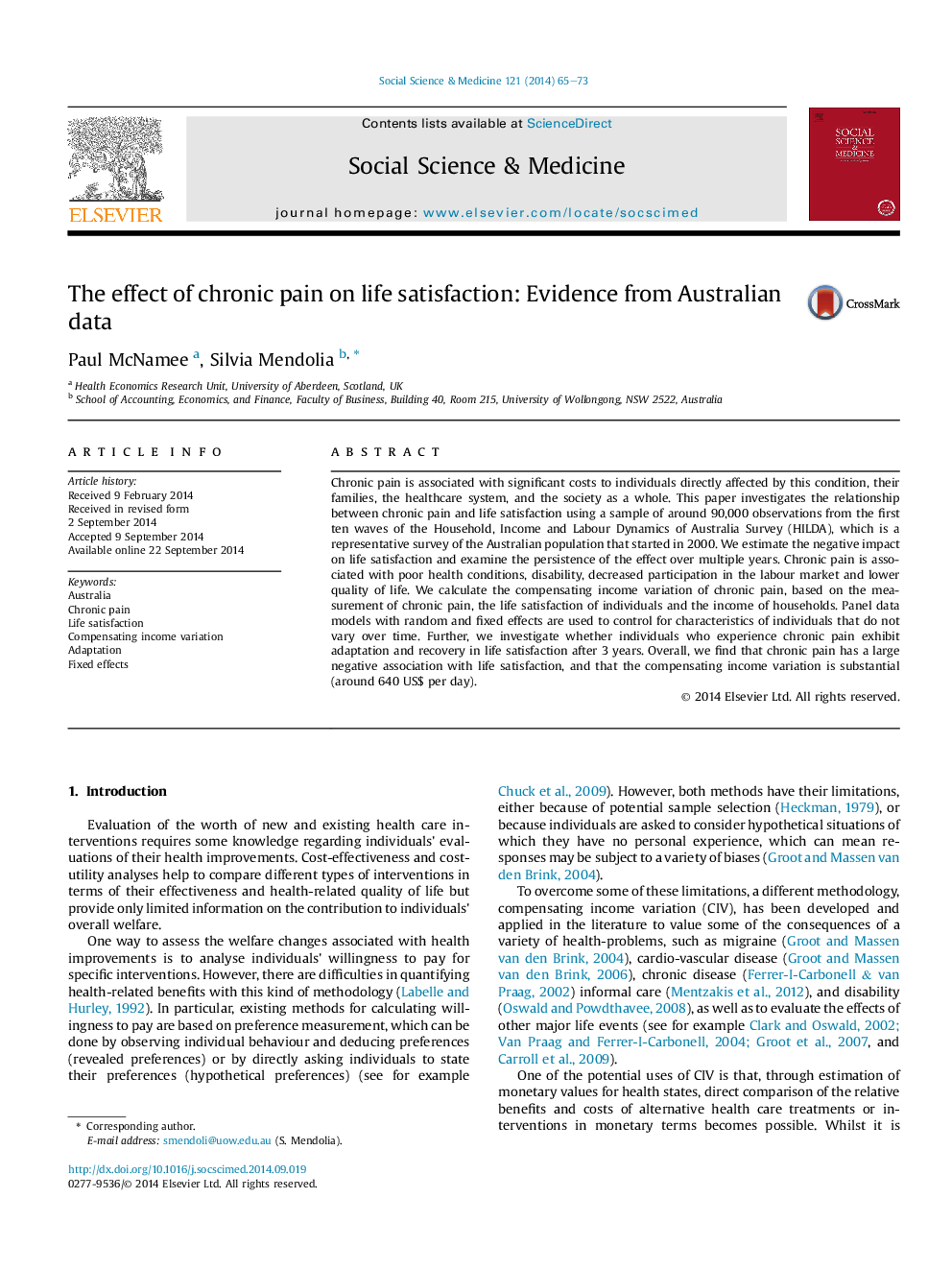| Article ID | Journal | Published Year | Pages | File Type |
|---|---|---|---|---|
| 7334172 | Social Science & Medicine | 2014 | 9 Pages |
Abstract
Chronic pain is associated with significant costs to individuals directly affected by this condition, their families, the healthcare system, and the society as a whole. This paper investigates the relationship between chronic pain and life satisfaction using a sample of around 90,000 observations from the first ten waves of the Household, Income and Labour Dynamics of Australia Survey (HILDA), which is a representative survey of the Australian population that started in 2000. We estimate the negative impact on life satisfaction and examine the persistence of the effect over multiple years. Chronic pain is associated with poor health conditions, disability, decreased participation in the labour market and lower quality of life. We calculate the compensating income variation of chronic pain, based on the measurement of chronic pain, the life satisfaction of individuals and the income of households. Panel data models with random and fixed effects are used to control for characteristics of individuals that do not vary over time. Further, we investigate whether individuals who experience chronic pain exhibit adaptation and recovery in life satisfaction after 3 years. Overall, we find that chronic pain has a large negative association with life satisfaction, and that the compensating income variation is substantial (around 640 US$ per day).
Related Topics
Health Sciences
Medicine and Dentistry
Public Health and Health Policy
Authors
Paul McNamee, Silvia Mendolia,
